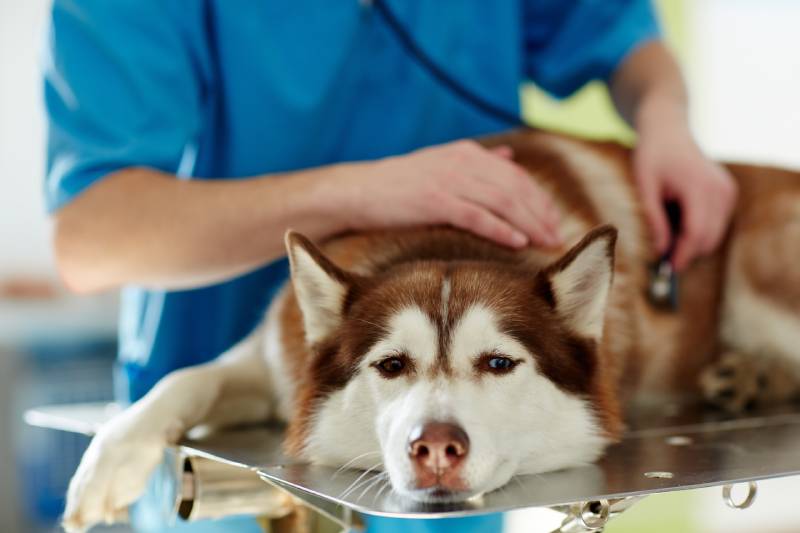If you live in an older home, you’ve probably heard warnings about lead paint and kids.
But your dog or cat is at risk, too. While lead poisoning in dogs and cats isn’t something you hear about every day, it’s a serious threat that can cause permanent damage or even death if you don’t catch it early.
The great news is that it’s completely preventable when you know what to look for. Here’s everything you need to know to keep your furry family members safe.
Why Is Lead Still a Problem in 2025?
Lead paint was banned years ago, but that doesn’t mean the danger disappeared. The CDC notes that all houses built before 1978 are likely to contain some lead-based paint, and old lead paint does not become dangerous until it’s disturbed.
Lead poisoning in pets can cause vomiting, seizures, and behavioral changes—making early detection crucial. Lead paint testing and lead paint inspection help identify hidden hazards in older homes. Protect your pets by removing risks and ensuring a safe, lead-free environment.
So if you’re planning renovations, sanding down old woodwork, or dealing with peeling paint in an older home, you’re potentially creating a lead hazard for your pets. And it’s not just paint.
Common sources of lead poisoning include:
- Lead-based paint chips and dust from older homes
- Car batteries and battery acid
- Fishing sinkers and weights
- Lead shot and ammunition
- Improperly glazed ceramic food or water bowls
- Old linoleum flooring
- Plumbing materials and solder
- Roofing materials
- Some toys manufactured before the late 1970s
- Contaminated soil near busy roads or old industrial sites
Dogs Face Higher Risk Than Cats
Lead poisoning is most common in dogs, with other species experiencing limited exposure due to reduced accessibility, more selective eating habits, or lower susceptibility.
But cats aren’t completely safe either. Because of their grooming habits, cats are more at risk of accidental ingestion of lead particles that contaminate their fur and paws.
Puppies are considered at greatest risk because they often chew incessantly, and lead crosses the blood-brain barrier more readily in immature animals than in adults.
The Early Warning Signs of Lead Poisoning
Lead poisoning in dogs and cats doesn’t always show up with obvious symptoms. Unlike the dramatic onset of clinical signs seen with most small animal poisonings, lead poisoning often has an insidious onset.
The symptoms depend on whether your pet was exposed to a lot of lead all at once (acute poisoning) or smaller amounts over time (chronic poisoning).
Acute lead poisoning symptoms:
- Severe vomiting and diarrhea
- Extreme abdominal pain
- Loss of appetite
- Behavior changes and anxiety
- Tremors and muscle spasms
- Seizures
- Hyperexcitability
Chronic lead poisoning symptoms:
- Gradual weight loss
- Persistent lethargy
- Intermittent vomiting or diarrhea
- Anemia and weakness
- Unsteady gait or stumbling
- Behavioral changes
- Occasional seizures
The frustrating part is that these symptoms sound very similar to other diseases, such as distemper or even thyroid disorders. If your pet shows any of these signs and you have any reason to suspect lead exposure, even if unlikely, tell your vet immediately.
Also Read: What Does an EPA Certified Lead Paint Inspector Do?
Getting the Right Diagnosis and Treatment
Lead poisoning is a serious condition that cannot be treated at home, and if you think your pet may have it, take them to a veterinarian immediately. Time is absolutely critical here.
Diagnosis involves either a urine or blood test, and sometimes two different tests are required to confirm lead poisoning, particularly in cats.
Treatment typically involves:
- Removing the source: If your pet just ate something containing lead, your vet may induce vomiting or perform gastric lavage (stomach pumping).
- Chelation therapy: Prompt chelation therapy in companion animals is often successful. This involves giving medications that bind to the lead in your pet’s bloodstream so their body can eliminate it through urine.
- Supportive care: Your pet may need IV fluids, anti-nausea medications, seizure control, and hospitalization, depending on the severity.
Most dogs recover within 24 to 48 hours after initial treatment if treated quickly. Pets with more severe symptoms may have permanent neurological damage, and pets exposed to lead over a long period may have lead stored in their bones that cannot be treated with chelating agents.
Pet Lead Toxicity Prevention
Prevention is so much easier than treatment. Here’s how to protect your pets from lead exposure.
If you’re doing home renovations:
- Keep your pets away when construction work is being done on your home
- Don’t let pets in renovation areas until after a thorough cleanup
- Cover furniture and floors in adjacent rooms to prevent dust spread
- Use only EPA-certified contractors for lead paint removal
Around the house:
- Use inexpensive lead test kits available at hardware stores to check painted surfaces and other areas you think may contain lead
- Keep pets away from peeling paint or chewed woodwork in older homes
Environmental precautions:
- Make sure your pets wash their paws after playing outside
- Remove shoes at the door
- Consider testing your yard’s soil
Water safety:
- Give your animals bottled water to drink if you think the water from your tap may be contaminated
- Have your water tested if you have old plumbing
- Run the tap for a minute before filling pet bowls if you have older pipes
Protect Your Family and Your Pets Today
Lead poisoning in dogs and cats is serious but preventable.
Manhattan Lead specializes in lead testing, inspection, and safe remediation for homes and buildings throughout New York City.
Don’t gamble with your family’s health. Contact us today for a professional assessment and get the expert guidance you need to create a truly lead-safe home.
Because when it comes to pet lead toxicity prevention and protecting everyone you love, knowing is always better than guessing.




